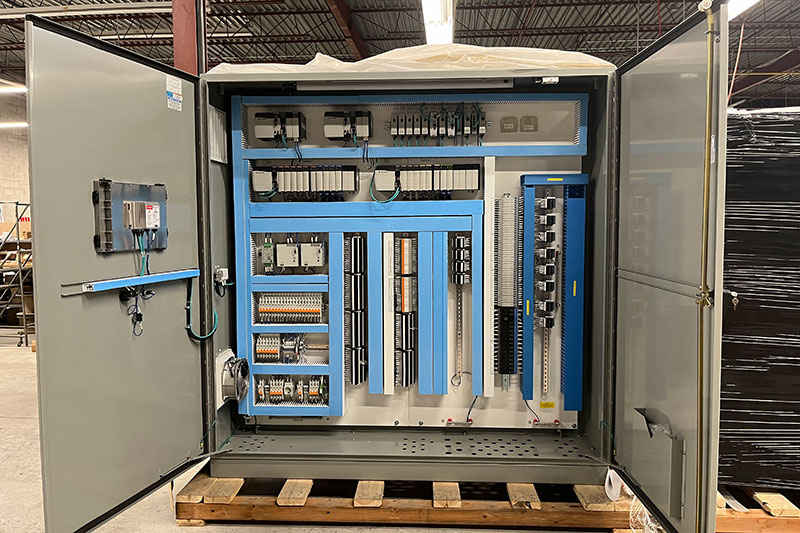
What are PLC panels?
Programmable logic controller (PLC) panels are electrical control panels that contain PLCs and other components used for automation and control purposes in industrial and commercial applications. PLCs are specialized digital computers designed to control and monitor various processes and machinery in industries ranging from manufacturing to infrastructure.
What are the key components and functions of PLC panels?
PLC: The heart of a PLC panel is the PLC itself. PLCs are programmable devices that execute control functions based on the program or logic with which they are programmed. They can process digital and analog inputs, make decisions, and send control signals to various outputs.
Input devices: PLC panels are equipped with various input devices, such as sensors, switches, and transmitters, that provide information about the status of a process or machine. These input devices allow the PLC to monitor and respond to changes in the system.
Output devices: Output devices in a PLC panel include relays, contactors, motor starters, solenoids, and other devices that the PLC can control to take action based on the logic programmed. For example, they can start or stop motors, open or close valves, or activate alarms.
Human-machine interface (HMI): Some PLC panels feature an HMI, which is a graphical user interface that allows operators and technicians to interact with the PLC system. It provides a visual representation of the process and allows for manual control and monitoring.
Power supply: A stable power supply is crucial for the proper functioning of the PLC and associated components. PLC panels typically include power supplies that convert incoming electrical power into the appropriate voltage and current needed by the PLC and other devices.
Communication ports: Many modern PLC panels have communication ports that allow them to connect to other systems, such as supervisory control and data acquisition (SCADA) systems, other PLCs, or computers for data logging and remote monitoring.
Enclosure: PLC panels are housed in enclosures made of materials that protect the components from elements of the environment such as dust, moisture that can cause physical damage. The type of enclosure used depends on the application’s location and conditions.
Wiring and terminal blocks: Wiring within the PLC panel connects the input and output devices to the PLC and other components. Terminal blocks are often used to simplify the wiring process and provide a structured and organized connection system.
PLC panels are highly flexible and can be programmed to perform a wide range of control tasks, making them essential for industrial automation and process control. They are used in industries such as manufacturing, water treatment, energy production, food and beverage processing, and many others to improve efficiency, accuracy, and safety in various processes and operations.
CCP PLC panels
CCP PLC panels can accommodate any and all hardware platforms. CCP PLC panel types include process control panels, material handling panels, pump control panels, safety panels, explosion-proof panels, and robot-control panels. We also offer PLC and HMI programming and commissioning as required. Click here to tap into our expertise in PLC panels.